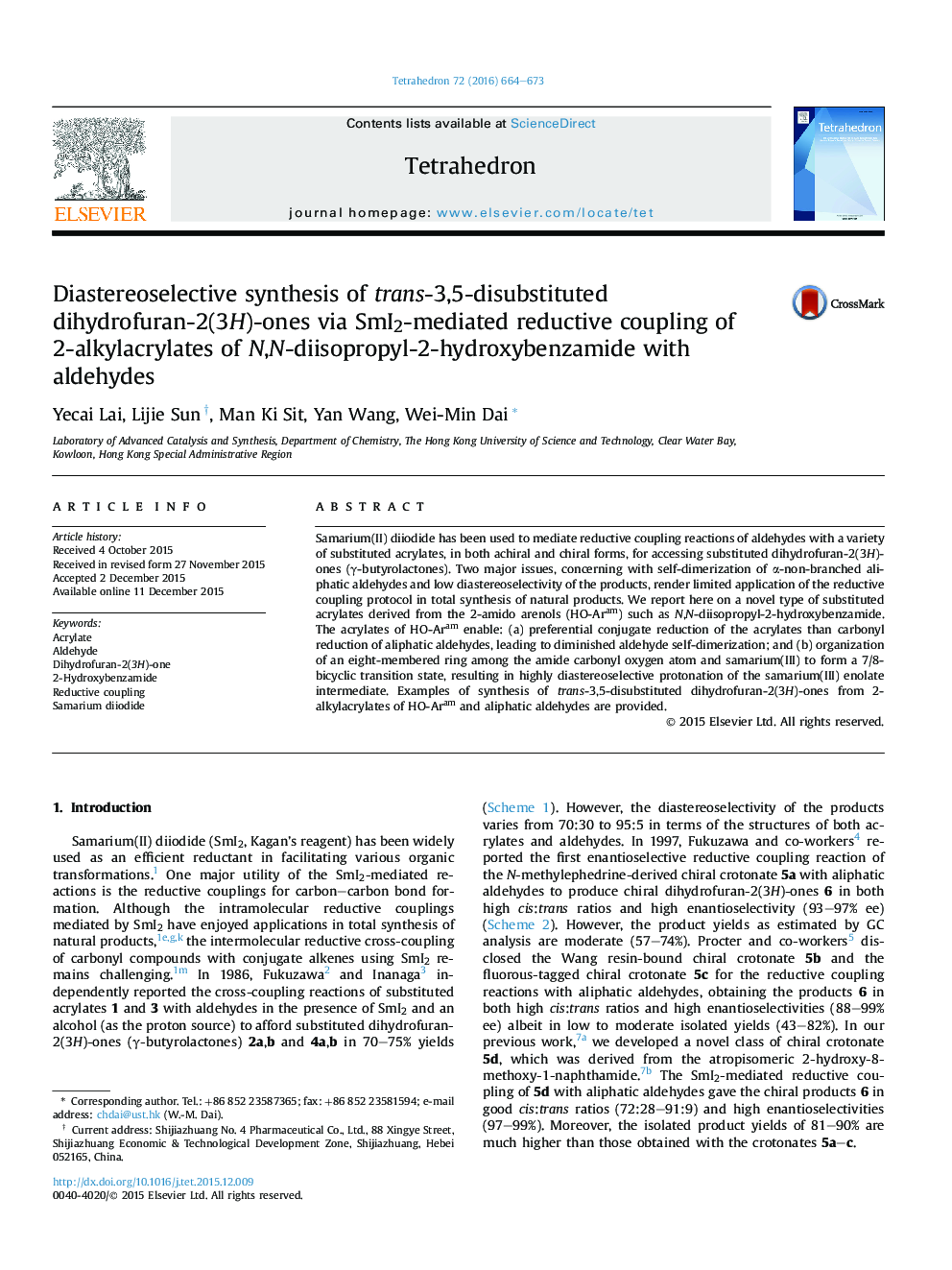| Article ID | Journal | Published Year | Pages | File Type |
|---|---|---|---|---|
| 5214217 | Tetrahedron | 2016 | 10 Pages |
Samarium(II) diiodide has been used to mediate reductive coupling reactions of aldehydes with a variety of substituted acrylates, in both achiral and chiral forms, for accessing substituted dihydrofuran-2(3H)-ones (γ-butyrolactones). Two major issues, concerning with self-dimerization of α-non-branched aliphatic aldehydes and low diastereoselectivity of the products, render limited application of the reductive coupling protocol in total synthesis of natural products. We report here on a novel type of substituted acrylates derived from the 2-amido arenols (HO-Aram) such as N,N-diisopropyl-2-hydroxybenzamide. The acrylates of HO-Aram enable: (a) preferential conjugate reduction of the acrylates than carbonyl reduction of aliphatic aldehydes, leading to diminished aldehyde self-dimerization; and (b) organization of an eight-membered ring among the amide carbonyl oxygen atom and samarium(III) to form a 7/8-bicyclic transition state, resulting in highly diastereoselective protonation of the samarium(III) enolate intermediate. Examples of synthesis of trans-3,5-disubstituted dihydrofuran-2(3H)-ones from 2-alkylacrylates of HO-Aram and aliphatic aldehydes are provided.
Graphical abstractDownload full-size image
